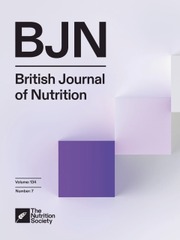No CrossRef data available.
Article contents
PUFA and intrahepatic cholestasis of pregnancy: a two-sample Mendelian randomisation analysis
Published online by Cambridge University Press: 23 October 2024
Abstract
This study aimed to explore the potential causal association between PUFA and the risk of intrahepatic cholestasis of pregnancy (ICP) using Mendelian randomisation (MR) analysis. A two-sample MR analysis was conducted utilising large-scale European-based genome-wide association studies summary databases. The primary MR analysis was carried out using the inverse variance-weighted (IVW) method, complemented by other methods such as MR-egger, weighted-median and weighted mode. Sensitivity analysis was also performed to validate the robustness of the findings. Results indicated a 31 % reduced risk of ICP for every 1 standard deviation (sd) increase in n-3 fatty acids levels (OR = 0·69, 95 % CI: 0·54, 0·89, P = 0·004) and in the ratio of n-3 fatty acids to total fatty acids (OR = 0·69, 95 % CI: 0·53, 0·91, P = 0·008). Conversely, there was a 51 % increased risk of ICP for every 1 sd increase in the ratio of n-6 fatty acids to n-3 fatty acids (OR = 1·51, 95 % CI: 1·20, 1·91, P < 0·001) and a 138 % increased risk for every 1 sd increase in the ratio of linoleic fatty acids to total fatty acids (OR = 2·38, 95 % CI: 1·55, 3·66, P < 0·001). The findings suggest that n-3 fatty acids may have a protective effect against the risk of ICP, while n-6 fatty acids and linoleic fatty acids could be potential risk factors for ICP. The supplementation of n-3 fatty acids, as opposed to n-6 fatty acids, could be a promising strategy for the prevention and management of ICP.
- Type
- Research Article
- Information
- Copyright
- © The Author(s), 2024. Published by Cambridge University Press on behalf of The Nutrition Society
Footnotes
These authors contribute equally to the research.



